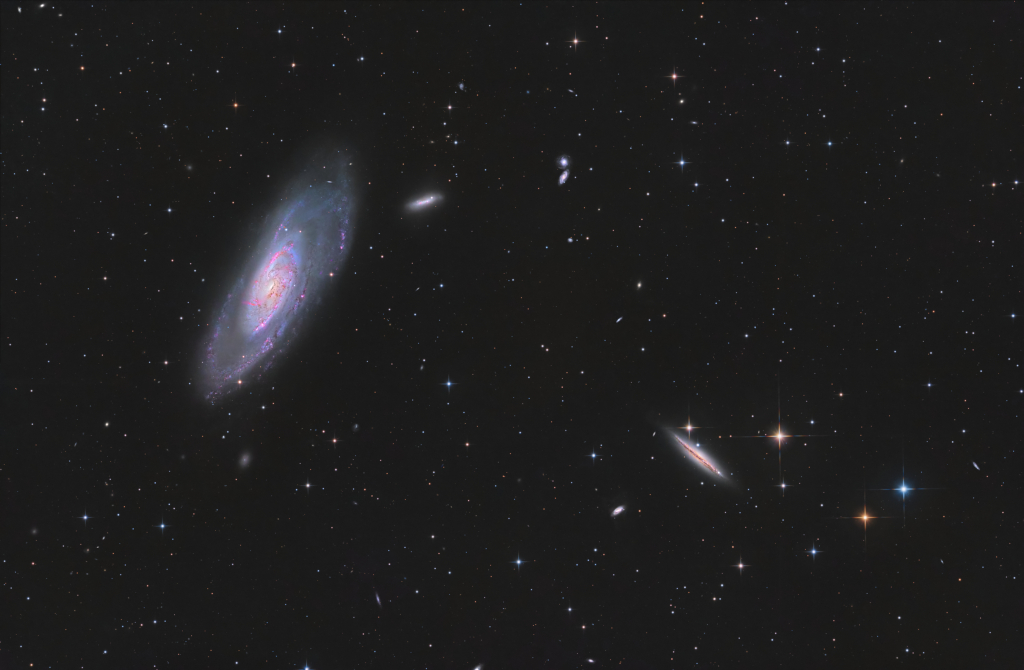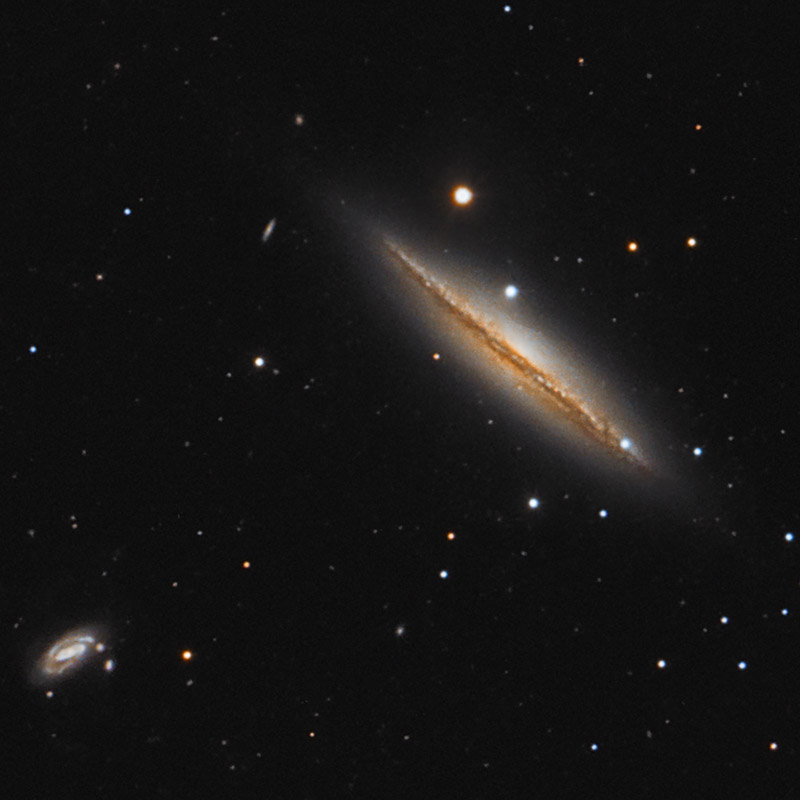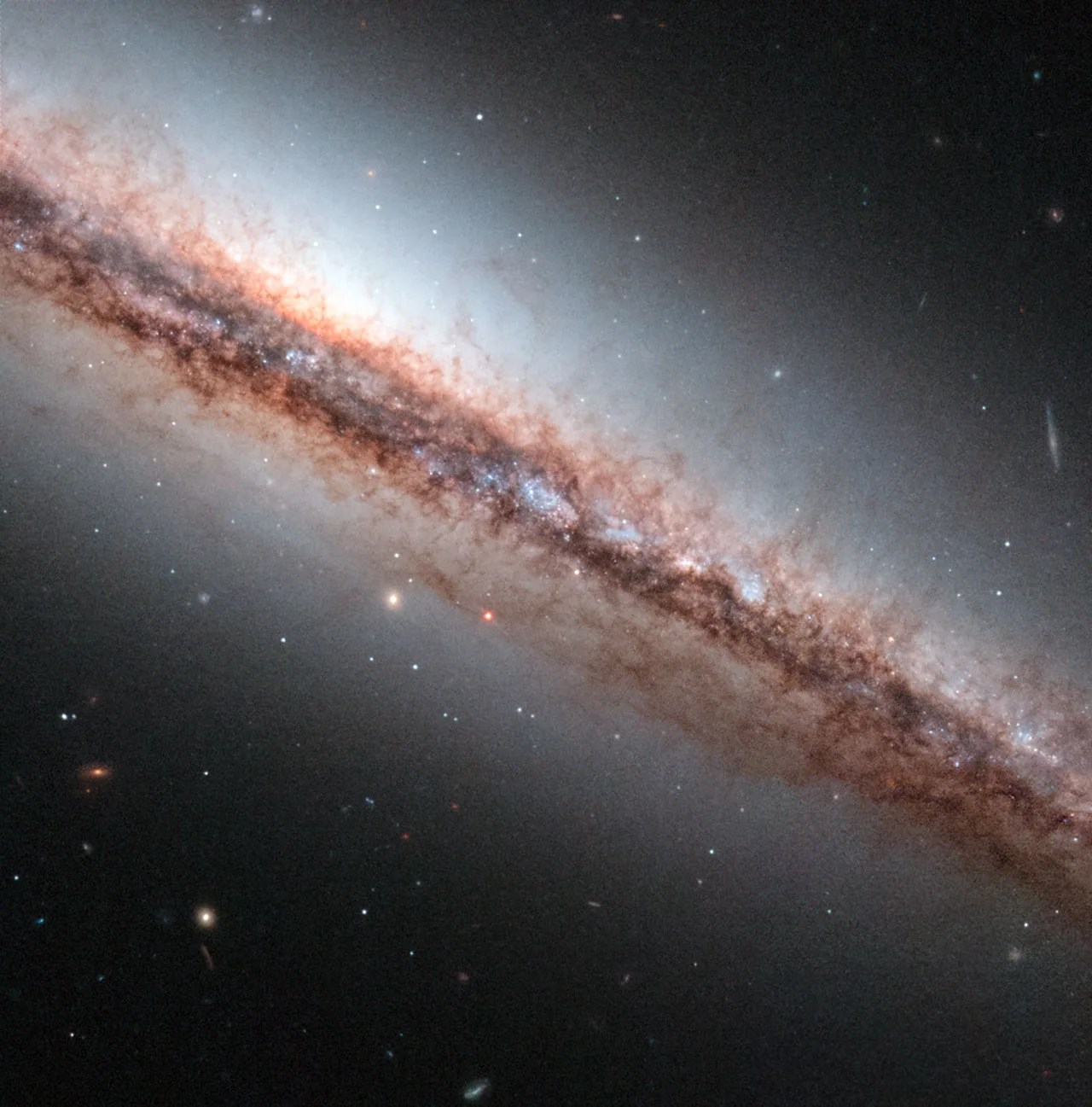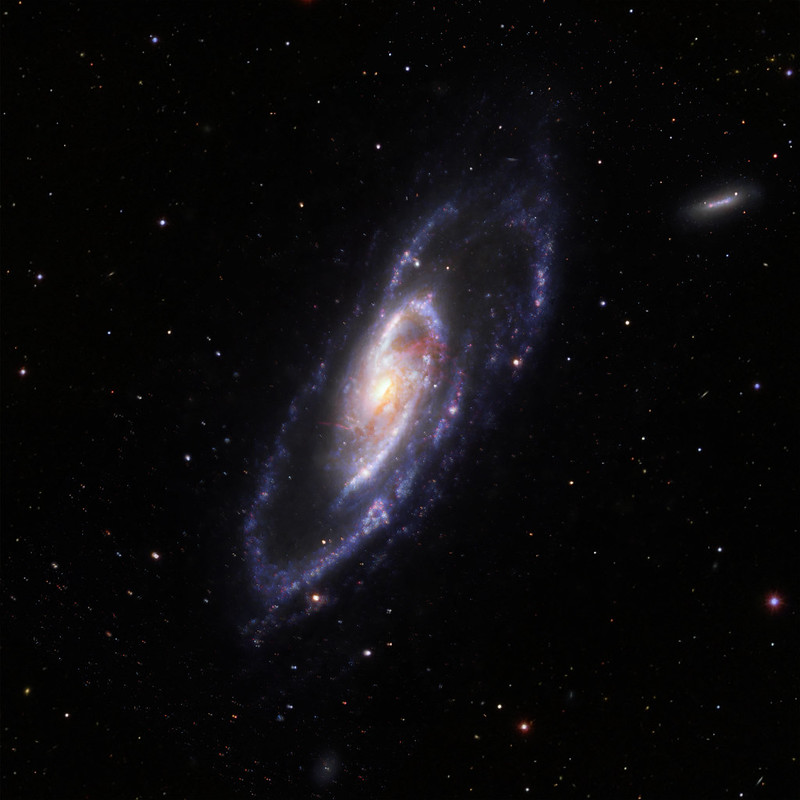I've been a bit sick, so I've not felt up to making any sort of complicated post. But then, today's APOD is the sort of APOD that I, who is not only the Color Commentator but also the Galaxy Girl, really should comment on, right?
This APOD is nice! It's an attractive field, containing both interesting galaxies and colorful stars. Let's start with the field around NGC 4217, shall we?
What I love most about this part of the field is that the blue-looking star (at 3 o'clock) really is blue for real! You don't know how unusual it is to find a truly blue star close to an NGC galaxy! The star in question is HD 106420, a fairly unreddened B-type star, of spectral class B7V, and it's as blue as Regulus. Actually, it's bluer.
The other bright stars in the field are K-type stars. The brightest and most distant of them is HD 106556 (to the upper right of galaxy NGC 4217 in Marcel Drechsler's image), which shines with the luminosity of some ~700 Suns, and it is sometimes classified as a G5III star.
Let's go galaxy hunting!
Okay, so maybe we should look at M106 itself? These are my two favorite portraits of M106:
I understand that the water masers at the heart of M106 are incredibly important, and they provide an almost exact distance to this galaxy. But since I am a math idiot, I'll leave it to the math whizzes of this forum to discuss the details of the masers.
But I understand one thing. Since we have such a good grip on the distance to this galaxy, it would be just great if we found a supernova type Ia in M105, because that would help us calibrate the luminosity of these "supernova standard candles". Unfortunately, the only two supernovas that have been found in M106 have been SN type II, and their luminosities are unpredictable. Unsurprisingly, therefore, one of the SN type II that were found in M106 was more than two magnitudes brighter than the other one.
Wikipedia wrote:
Two supernovae have been observed in M106: SN 1981K (type II, mag. 17), and SN 2014bc (type II, mag. 14.8).
Let's look at a few more galaxies around M106!
Take a look at small galaxy NGC 4248. If you look at the full size of the picture, you can clearly see two pink nebulas in NGC 4248. This galaxy has virtually the same radial velocity as M106, so it is clearly a satellite of M106.
Not so interacting galaxies NGC 4231 and NGC 4232! While the distance to M106 is some 23 million light-years, the apparent radial velocity distance to these two is more than 300 million light-years.
And do you remember the small background galaxy of NGC 4217, NGC 4226 in the picture by Rick J. of Cloudy Nights? The distance to NGC 4226 also appears to be more than 300 million light-years too, just like the distance to galaxies NGC 4231 and NGC 4232! These three galaxies form a group! Note how similar they are, too. All of them are spiral galaxies with a good amount of star formation.
Cool, eh?

Wait - you don't think so?

Well, I do!

Ann
 A View Toward M106
A View Toward M106








